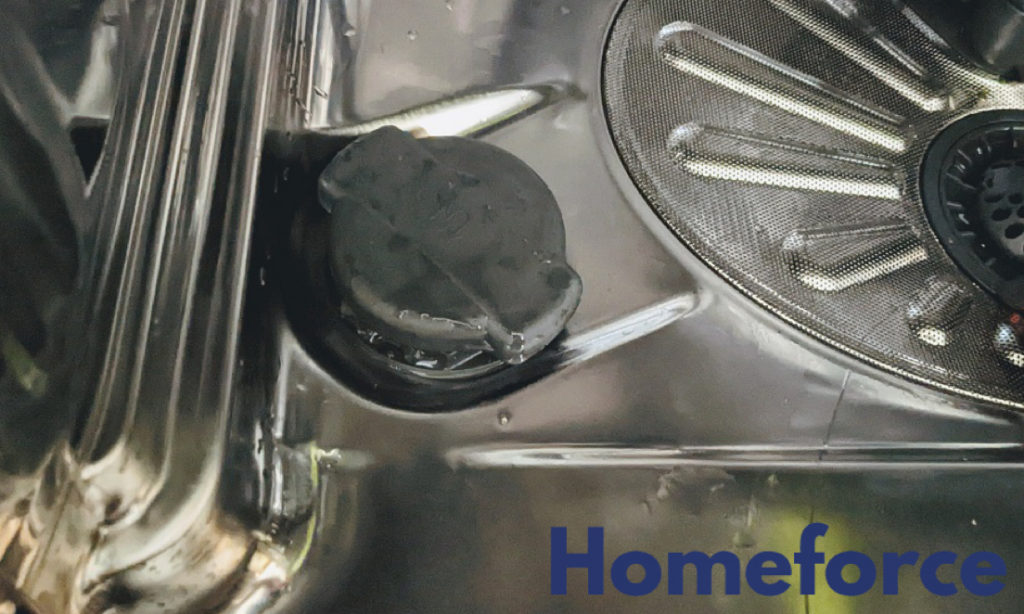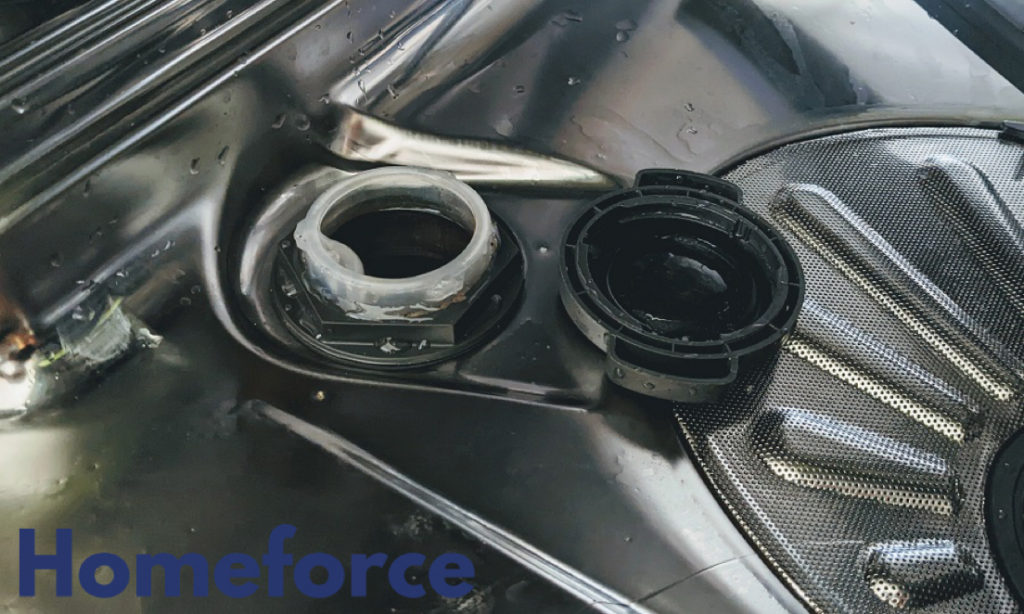Written On
Thu 1st September 2022
Written By
Homeforce
Category
Guides
Share This
We usually don’t pay attention to our dishwasher when it’s working fine, and why would you? Aside from using some great cleaning hacks, there’s nothing you need to do – until you notice the salt dispenser not working properly.
As home appliance specialists, we are well versed in dealing with a wealth of issues that arise. And the dishwasher salt dispenser not working is one of them.
So here we’ll try to help get it back up and running for you, starting with a quick roundup first.
Salt dispensers often fail when they need unclogging, or due to mineral buildup. They can also develop a cracked seal, have a faulty float switch, or a faulty water inlet valve. It could simply be that the dishwasher is not level. Often, cleaning the salt dispenser is the first point to check.
Let’s get into a bit more detail on these points along with the fix. But first, it helps to understand how the salt dispenser should work during normal operation.
How a dishwasher salt dispenser works
The dishwasher salt dispenser is located inside the door, usually within a receptacle on the floor of the dishwasher.
It’s used to release salt into the dishwasher during the regeneration cycle.
This cycle helps to remove hard water deposits from the dishwasher, making it more effective at cleaning dishes.
The amount of salt dispensed is controlled by a float switch that is located in the salt dispenser.
When the dishwasher is turned on, the float switch activates and allows the salt to flow into the dishwasher.
As the Dishwasher cycle progresses, the float switch lowers and cuts off the flow of salt.
This ensures that just the right amount of salt is used and that any excess is flushed out of the dishwasher.
The salt dispenser is an important part of the Dishwasher and needs to be working properly for the Dishwasher to function optimally.
Here’s the list of the problems and fixes we’ll go through. Then we’ll tackle some other common questions.
- The salt dispenser is clogged
- The salt dispenser requires descaling
- There is a leak in the salt dispenser
- Float switch error
- Faulty water inlet valve
- Water hardness
- The dishwasher is not level.
The salt dispenser is clogged
Dishwasher salt dispensers can break for a variety of reasons. The most common reason is that the dispenser is simply clogged with salt.
Salt can become lodged in the dispenser, preventing the float switch from working properly. If not treated then this may cause further faults to start in the float switch.

How to unblock a dishwasher salt dispenser
To fix this, you’ll need to start by unplugging the dishwasher from the power source.
Next, remove any user-accessible parts of the salt dispenser. Locate the blockage and use a small brush or toothpick to clear it away.
If the clog is stubborn, you may need to use a plunger or other tools to remove it.
The salt dispenser requires descaling
Over time, mineral deposits (and detergent deposits) can build up inside the dispenser, preventing the salt from flowing freely.
If you’re cleaning the salt dispenser regularly this shouldn’t be an issue. But if it is, then you can clean out any mineral build-up by using a vinegar solution or a commercial descaling product.
There is a leak in the salt dispenser
Another common problem is that there is a leak in the salt dispenser. This can be caused by a variety of factors, including a cracked dispenser or loose connections.
When you remove the user-accessible housing that retains the salt, you may notice any cracks, if this is the case, then you should replace the entire dispenser.
If the connections are loose, you can try to tighten them. If this doesn’t work, then again, you’ll need to replace the dispenser.
Float switch error
If the problem persists, it could be because the float switch is not working properly.
As we mentioned earlier, the float switch controls the flow of salt into the dishwasher. Often the float switch is simply stuck in the “on” position, which prevents salt from flowing into the dishwasher.
The easiest way to fix this is to simply replace the float switch.
This is not an easy task for most consumers. The best option here, or for any replacement requirements is to simply give us a call, and we can help from that point.
Faulty water inlet valve
Finally, if your dishwasher is still not dispensing salt, it could be because the water inlet valve is not working properly.
This valve controls the flow of water into the dishwasher. To fix this, you’ll need to replace the faulty inlet valve.
Again, contact us for assistance if you are not sure how to tackle this issue.

Water hardness
If your dishwasher isn’t using enough salt, it could be because the water hardness isn’t set properly.
You’ll need to adjust the water hardness setting to match the type of water in your area. Refer to your dishwasher’s manual for instructions on how to do this.
If you’re still having trouble, get in touch with us and we’ll be happy to help.
The dishwasher is not level
If the Dishwasher is not level, the salt dispenser will not work properly. This can be caused by a variety of factors, including incorrect installation or a faulty levelling system. To fix this, you’ll simply need to level the dishwasher.
So here’s a little more about the use of salt in your dishwasher.
Will my dishwasher stop working if there is no salt?
If you live in an area with soft water, you may not need to use salt in your dishwasher.
However, if you live in an area with hard water, it’s important to use salt in your dishwasher to prevent the build-up of mineral deposits on your dishes and dishwasher parts.
If you’re not sure whether you need to use salt in your dishwasher, check the manufacturer’s manual. If you have a Beko dishwasher, this guide may help.
How do I know if my dishwasher needs salt? And how much?
If you see a “check salt” or “add salt” indicator light on your Dishwasher control panel, it means that your Dishwasher is running low on salt and needs to be refilled.
If there is no indicator, then topping up the salt around once a month should be more than enough.
How do I add salt to my dishwasher?
Most dishwashers have a built-in salt dispenser. To add salt, simply open the Dishwasher door and pour salt into the dispenser until it’s full.

However, if your dishwasher doesn’t have a built-in salt dispenser, or you’re not sure where it is, consult your dishwasher manual for instructions on how to add salt.
Should there be water in the dishwasher salt dispenser?
It’s normal to find water in the dispensing area of the salt dispenser after first use. Adding salt will displace the water. There should not be any water below that compartment. If there is, it means that the seal on the dispenser may not be working properly and needs to be replaced.
Water below the salt dispenser area may also be the cause of a dishwasher leak.
What type of salt should I use?
You should use correctly supplied dishwasher salt, also known as Drying Salt or Peloid Salt. Do not use regular table salt, as it will not dissolve as quickly and may harm your machine.
How do I know if my dishwasher is using too much salt?
If you notice that your dishes are not coming out as clean as usual, or there is a white film on them, it could be a sign that your dishwasher is using too much salt. You can try using less salt, or a different type of salt, to see if that helps.
It may also help to understand how often to run your dishwasher.
Dishwasher salt dispenser not working – Round up
We hope this troubleshooting guide has helped you to fix your salt dispenser problems. If you need further assistance, then simply give us a call and we will do our best to help you solve the problem.
To address these problems as they occur, it’s far easier to take out an appliance plan, this will cover all your appliances, ensuring they are repaired as soon as a problem becomes apparent.